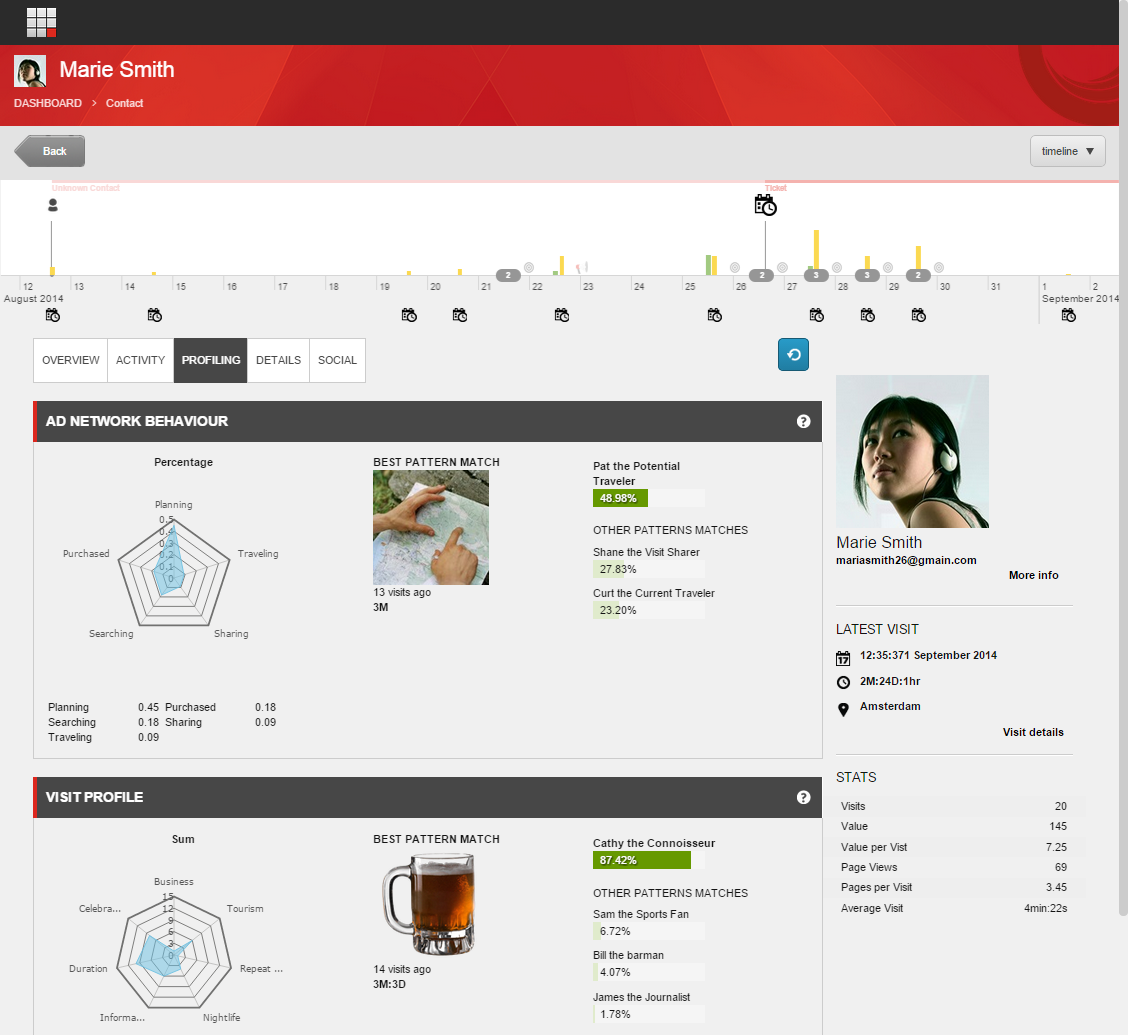Tactic 6 Use Profiles to Personalise

Sitecore’s visitor profiling capability tracks and collects information on customers in real time, at scale. Therefore, as a Sitecore user, you have the ability to track a user’s history of previous interactions on your website, and store it in a profile against that users's account (or IP address if they haven't signed up for an account yet). Using the information held within their profile, you can form understandings and predictions of what that particular customer might like to see upon their next visit (…or even during the same visit).
Let’s assume your site can be broken down into a number of different identifiable sections. You might have a set of Product Catalogue Pages, Service Pages, Pricing Tables, Blog Posts, Job Listings etc. Well, if a customer's profile suggests that they've been looking at the Pricing Page, you might choose to surface a widget that offers a discount. On the other hand, if a the visitor's profile is heavily oriented towards your blog posts, you might wish to call out some of the most popular or most recent blog posts that you've published.
Essentially, Personalisation is all about providing helpful, relevant information wherever you can, because that results in a great User Experience, a strengthen brand loyalty, and eventually, increased conversions.

User profiling is an easy way to start making the most of Sitecore’s advanced functionality. Here are a few other ways you can use profiling to your advantage when implementing Personalisation:
Stage in buying journey
You can map the type of pages being viewed to a particular stage in the buyer’s journey, for example those looking at the "About Us" page are probably in the early stages of the buying cycle compared to those looking at the Pricing page. If you take that into consideration, you can once again, provide relevant information, promoting pages that push the visitor further down the buying cycle one step at a time.
Product/Service categories
These profiles help you understand which specific product or service categories interest a customer most. If you have an active sales team, this information could make it a lot easier for them to open a conversation with the customer because they’re able to provide relevant, concise information on the visitor's exact needs.
Industries
This profile offers many opportunities for personalising the content you present. Consider working for a company who specialise in weighing scales.: They offer many different size scales, from your typical kitchen weighing sales, right through to trucking weigh stations. Knowing what industry your visitor is interested in will help you determine the best type of content to show them next!
Personas
If you’ve been through the worthwhile exercise of creating personas, you can use the Persona type to help map out the most relevant content for that particular visitor. If they look like “Freddie the Finance Director”, you might choose to use that information to direct the visitor to your ROI calculator, whereas a “Martha the Marketing Assistant” might prefer to see your product features page.
We highly recommend using Sitecore’s profiling capabilities, but it does require some time and effort to identify the profiles that you need.
How to do this in Sitecore:
1. Create profiles (including profile and pattern cards – more information on all of these things can be found here).
2. Profile content: This is where you go through your entire sitemap and assign profile values or content cards to each piece of content. This will probably be performed on a step-by-step basis, so we recommend starting with high-traffic content first (the 80/20 rule applies).
3. Personalise content based on built-in rules, for either a match on a pattern (recommended) or the profile values.
Creating profiles also comes with a bonus: They are also used in Sitecore Experience Analytics. As such, profiles can help you determine segment behaviour, identify your best performing content, and spot which channels and campaigns are best for attracting any given segment.
Furthermore, your team may find that you do not have enough profile-specific content to profile, which leads the team to create more specific and compelling content, improving profiling and personalisation.
Interested but need assistance?
If you'd like to get started with Personalisation but aren't sure where to start, check out our free training video on Personalisation.
Alternatively, call us today on 01189 314196 or get in touch here to organise a private training day for your organisation.